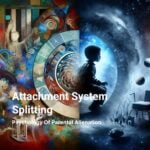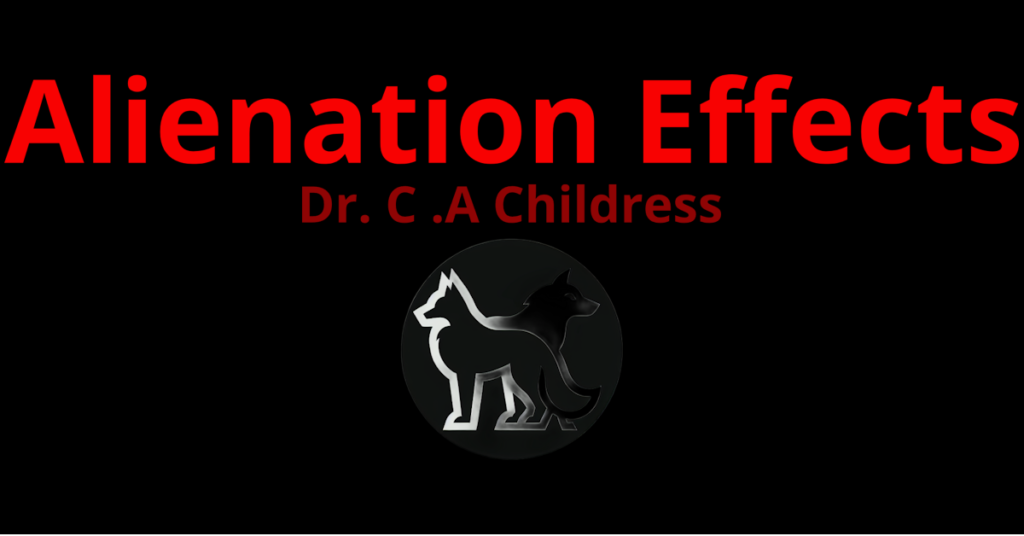Attachment System & Splitting Basics

What Happens When An Attachment System Fails


AUDIO. Introjects. AKA Snapshots. Basics
Jul 6, 2024 • 22 minutes
First name Email I accept the privacy policy

VIDEO: How Divorce Can Physically Kill You
Jul 5, 2024 •
Introduction: The Silent Crisis *Attention. If you are ill now and need support. Join Our Mens Group. We would like to meet you. Lets talk…

AUDIO. Splitting EP 2. & Triangulation Basics
Jul 3, 2024 • 29:30
TRANSCRIPT FROM BLOG: Child splitting is a psychological phenomenon where a child begins to perceive the world in dichotomous, black-and-white terms. This cognitive distortion often…

AUDIO. Splitting Basics
Jun 26, 2024 • 18:00
Transcript Blog. What Happens When An Attachment System Fails The attachment system is a fundamental component of a child’s emotional development, acting as the foundation…

AUDIO. The Attachment System 1. Introduction
Jun 25, 2024 • 18:59
Influenced by: Dr. C. Childress, Prof. Sam Vaknin Transcript Blog: What is the Attachment System? The attachment system can be thought of as an invisible…
The attachment system is a fundamental component of a child’s emotional development, acting as the foundation for feelings of safety and security. This system is built through consistent, nurturing interactions with caregivers, who provide emotional support and meet the child’s needs. When this system functions properly, it enables the child to explore the world with confidence and build healthy relationships.
However, when the attachment system becomes worn out due to inconsistent or inadequate caregiving, the consequences can be significant. Research by Dr. Craig Childress and Sam Vaknin highlights the adverse effects on children whose emotional needs are not consistently met. For instance, consider a child named Alex. Alex’s parents are frequently absent due to work commitments or are emotionally unavailable when present. This lack of reliable support can leave Alex feeling scared, sad, and confused.
Without the assurance that their caregivers will be there to provide comfort and meet their emotional needs, children like Alex may struggle to develop a sense of trust. This insecurity can manifest in various ways, such as difficulty forming and maintaining relationships, heightened anxiety, and a pervasive sense of vulnerability. Alex might find it challenging to trust others, fearing that they too might be unavailable or unreliable. This can lead to a reluctance to seek help or form close bonds, impacting Alex’s social and emotional growth.
The attachment system’s wear and tear can have long-lasting effects, shaping the individual’s ability to navigate social interactions and emotional experiences throughout life. Understanding the importance of a reliable attachment system underscores the need for consistent, responsive caregiving to foster a child’s emotional well-being and capacity for healthy relationships.
The Concept of Splitting and Its Lifelong Consequences
Splitting is a psychological defense mechanism where an individual categorizes people and situations in extremes, viewing them as either ‘all good’ or ‘all bad.’ This binary thinking often emerges in childhood due to inconsistent caregiving, leading to a fragmented perception of relationships and the world. For instance, Alex, mentioned in the previous section, might begin to see their parents as either perfect beings or utterly terrible, with no middle ground. This black-and-white thinking is a coping strategy to manage the emotional turmoil stemming from unpredictable or unreliable caregiving.
According to Dr. Craig Childress, a renowned clinical psychologist, unresolved splitting can have profound long-term consequences. When a child like Alex grows up without addressing this defense mechanism, they may carry this polarized view of relationships into adulthood. This can manifest in various ways, such as struggling to maintain balanced relationships, experiencing intense emotional swings, and having difficulty integrating both positive and negative aspects of themselves and others. The inability to see people and situations in a nuanced way can lead to chronic relational instability, impacting personal, professional, and even social interactions.
Dr. Sam Vaknin, an expert on personality disorders, further emphasizes the emotional toll of unresolved splitting. Individuals who continue to employ splitting as adults often experience heightened anxiety, depression, and a pervasive sense of mistrust. They may also exhibit behaviors reminiscent of borderline personality disorder, such as intense, unstable relationships and fear of abandonment. The ongoing psychological distress can limit their capacity for emotional resilience and adaptive coping, perpetuating a cycle of relational turmoil and self-sabotage.
In essence, the concept of splitting underscores the critical importance of consistent and reliable caregiving during childhood. Addressing and resolving this defense mechanism early on can significantly improve an individual’s emotional wellbeing and relational health, fostering a more balanced and integrated view of themselves and the world around them.
How Childhood Splitting Affects Family Dynamics in Adulthood
Childhood splitting, a defense mechanism where a child perceives people and situations in all-or-nothing terms, can have profound effects on family dynamics in adulthood. Adults who experienced splitting as children may unconsciously replicate this behavior in their own families, leading to strained relationships, misunderstandings, and emotional distress. This replication often occurs during conflicts, where individuals may revert to viewing their spouse or children in extreme terms, either as entirely good or completely bad.
Consider the example of Alex, who grew up in an environment where splitting was a common coping mechanism. Now, as an adult, Alex is married and has children. During conflicts, Alex might start seeing their spouse in black-and-white terms, focusing only on their perceived flaws and ignoring their positive attributes. This can create a hostile and emotionally charged atmosphere, making it difficult for the family to resolve issues constructively. Over time, such patterns can lead to deep-seated resentments and a breakdown in communication, further exacerbating the emotional distance within the family.
According to the works of Childress and Vaknin, recognizing and addressing these patterns early is crucial. Childress emphasizes the importance of understanding that these behaviors are often rooted in unresolved childhood experiences. Vaknin, on the other hand, highlights the need for self-awareness and therapeutic interventions to break the cycle of splitting. By becoming aware of these tendencies, individuals can learn to approach conflicts with a more balanced perspective, fostering healthier and more supportive family relationships.
Addressing childhood splitting involves not only recognizing the behavior but also actively working towards changing it. This may include seeking therapy, practicing mindfulness, and developing better communication skills. By doing so, adults can create a more stable and nurturing environment for their families, breaking free from the patterns of their past and promoting emotional well-being for future generations.
The Importance of Understanding and Healing Childhood Wounds
Understanding one’s childhood experiences, particularly those from the formative years of ages 1 to 10, is crucial before entering into long-term commitments such as marriage. Renowned experts like Childress and Vaknin have emphasized that self-awareness and healing of childhood wounds can significantly prevent the replication of harmful patterns in adult relationships. These early years are often when core attachment styles and emotional patterns are established, which can profoundly influence behavior and relationship dynamics well into adulthood.
For individuals raised in single-parent homes, particularly by single mothers, the likelihood of divorce in their own marriages can be higher. This statistic highlights the importance of addressing unresolved issues stemming from one’s upbringing. Single-parent households may inadvertently expose children to emotional and psychological challenges, such as feelings of abandonment, lack of security, or the burden of additional responsibilities at a young age. These experiences can shape their perceptions of relationships and commitment, often leading to difficulties in their adult romantic lives.
Preventative measures, such as engaging in therapy and self-reflection, are essential for breaking these cycles. Therapy provides a structured and supportive environment where individuals can explore and understand their childhood experiences, identify harmful patterns, and develop healthier coping mechanisms. Self-reflection, on the other hand, encourages individuals to introspect and gain insights into their emotional responses and relationship behaviors.
By prioritizing self-awareness and healing, individuals can create a strong foundation for healthier and more fulfilling relationships. This proactive approach not only benefits personal well-being but also contributes to the stability and longevity of future commitments. Understanding childhood attachment and addressing any unresolved issues is a vital step towards ensuring that past wounds do not dictate the future, allowing for healthier and more resilient relationships.
Have You Retained This Info? Repitition Is Key









Responses